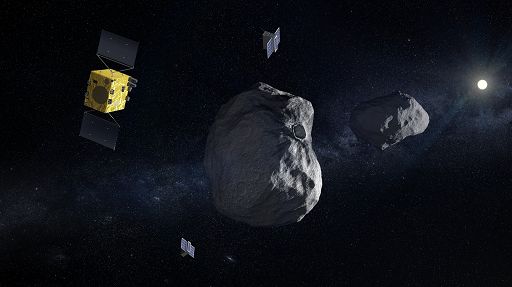In 2024, the Politecnico di Milano will once again venture into deep space. ESA is planning the launch of the Hera space probe towards the Didymos binary asteroid, the smallest celestial body singled out for a mission, where it will release two mini CubeSat satellites.
The group led by Professor Francesco Topputo, will be responsible for calculating the trajectory and the guidance, navigation and control system of the second “Milani” CubeSat.
Hera is the European contribution to AIDA, a collaboration between ESA and NASA, whose aim is to test a defense system to protect against asteroids on a collision course with Earth.

According to the note issued by the Milanese University, “the Department of Aerospace Science and Technology of the Politecnico di Milano has just been selected to play a leading role in the mission. The team led by Professor Francesco Topputo will be responsible for calculating the trajectory and the guidance, navigation and control system of the second “Milani” CubeSat, dedicated to Andrea Milani, Professor of Orbital Mechanics at the University of Pisa, who passed away in 2018.” The note also underlines that “the use of CubeSat miniaturized satellites is extremely ambitious and represents a fundamental step in the exploration of the Solar System which is simultaneously low cost and features high technological and scientific content”.
For the very first time, the CubeSats will have to be autonomous at a distance of over 10 million kilometers from Earth, in the currently little known and unexplored environment of a binary asteroid.
One CubeSat will provide important information about the physical and dynamic properties of Didymos and Dimorphos. The other CubeSat will act as a fundamental cornerstone in the creation of the first interplanetary communication network between the mother satellite (Hera) and its two CubeSats, and it will experiment innovative autonomous guidance and control algorithms in deep space for the first time.
Credits home: inmeteo.net